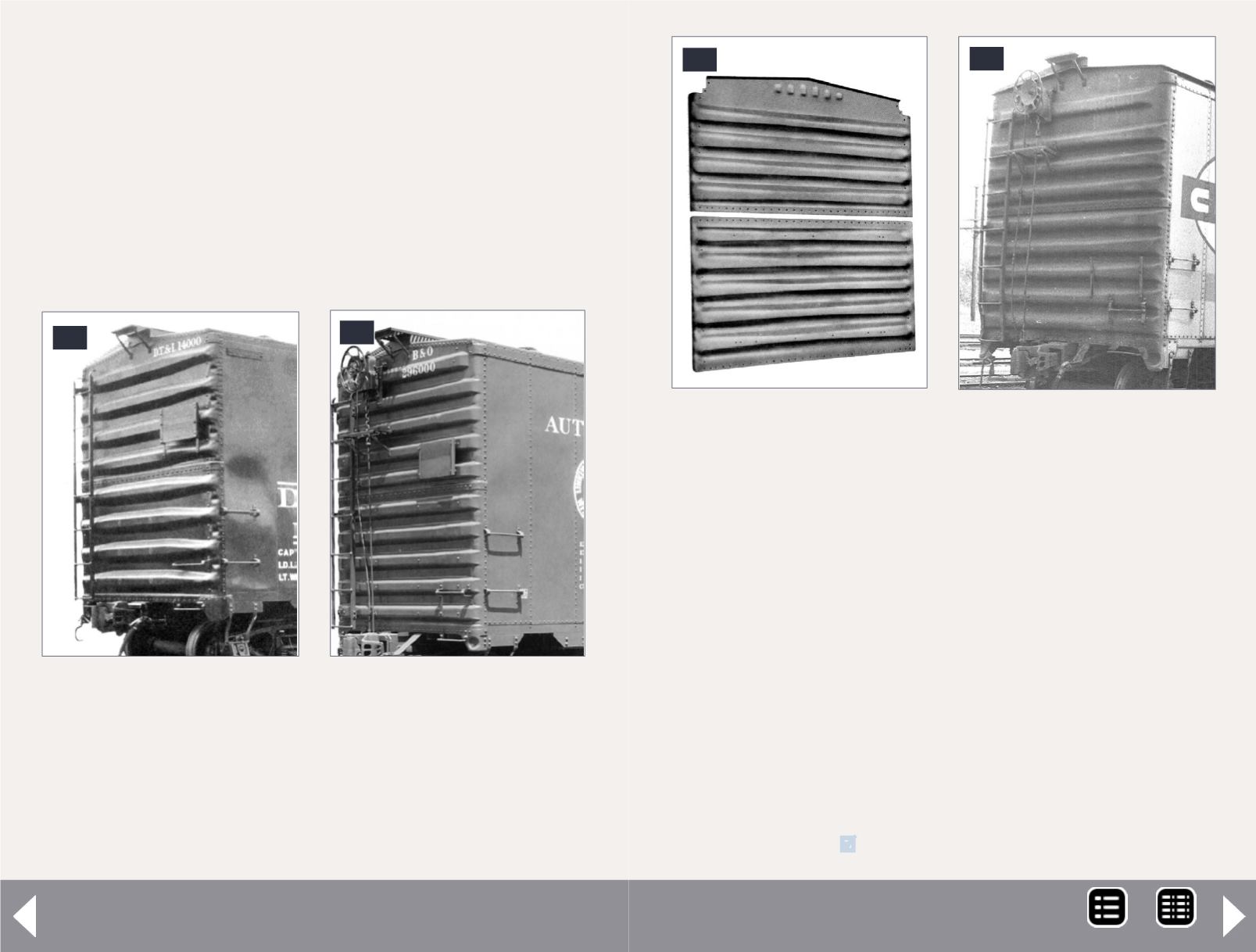
At about the same time, Greenville Steel Car Company devel-
oped a proprietary end that was similar to the Despatch end.
The design was used exclusively on cars built by Greenville.
Railroad historian, Richard Hendrickson, cites the ends on the
B&O M55c class boxcars Greenville built in 1945 as an example
of this practice [43].
In the 1970s, Stanray introduced heavy non-terminating
box ribs that were welded directly to the corner posts [48].
The non-tapered design provided some flexibility in the
42
43 Greenville Steel Car
Co. built this car in 1945
with a 5/5 end with non-
tapered ribs that wrap
around the W-section
corner post. Note the
shortened top rib.
43
42. Corner dimples
between the dart-free
ribs identify this as an
ACF proprietary end
introduced in 1948.
Boxcar ends - 13
44. Pullman-Standard
promoted this 4/5
steel end in 1953. P-S
frequently identified their
ends with six indentations
in the hat section.
44
45. Proprietary 4/5 end
designed by Despatch
Shops in East Rochester,
NY. Note the truncated
top rib.
45
manufacturing process without the need for specialized tooling
for various car sizes.
Terminating and non-terminating end ribs
defined
A terminating end wraps around the side of the car and is bolted
or welded to the sides [45, 46]. Non-terminating ends are recessed
flush with the corner of the car and are either bolted or welded to
the corner post [48].
MRH-Oct 2014


